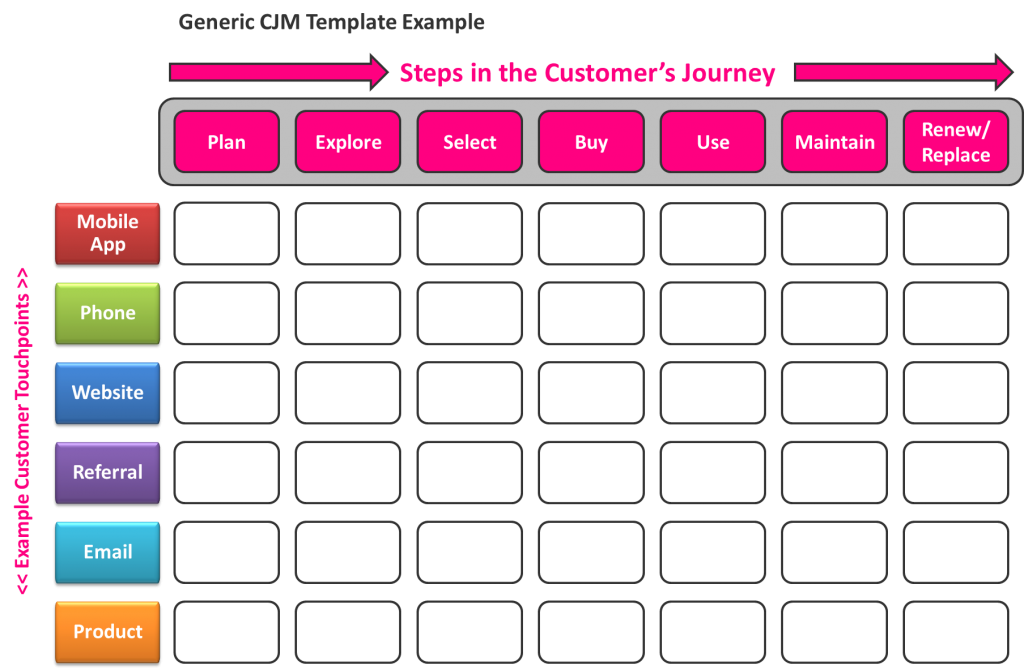Customer journey mapping (CJM) is a method for capturing and describing all of the experiences that customers have as they engage with a service or product. It takes into consideration not just what happens to them, but also how they react, how they feel about those encounters. When applied well, it can uncover opportunities for improvement and innovation, and serve as a strategic tool to ensure that every interaction with the customer is really as efficient and effective as it possibly can be.
CJM offers a visual representation of the products and services that an organisation provides – operational processes, touchpoints and the physical evidence related to that delivery – from the perspective of the customer. Additionally, it highlights and connects the backstage processes throughout the business that support service execution.
Forrester Research defines customer journey maps as:
“Documents that visually illustrate customers’ processes, needs, and perceptions throughout their relationships with a company”
The strength of this service-mapping approach lies in it’s unrelenting focus on the customer as the central premise for innovation, service improvement and experience design. That doesn’t mean that customers are the sole source of innovation, but rather that creating value, for the customer, is the central purpose of innovation and improvement.
Service-mapping has proved itself to be a highly effective, and extremely versatile, method for service improvement and innovation, customer experience design and strategic change that is centred around customers.
Building a deeper understanding of the way that customers experience and remember a service interaction is but one of the many challenges encountered by companies that undertake the design, deployment and documentation of a service-offering. Service mapping is a highly adaptable technique that helps managers with the challenges of service-process design, evaluation and improvement. It is a robust approach that can be used to illustrate an end-to-end service across numerous dimensions of analysis.
Service-mapping then, can facilitate the detailed improvement of a single step in the customer process together with the development of a comprehensive, visual representation of a complete, end-to-end service-process.
Use service maps:
- To identify what’s most important to your customers
- To understand what creates, or detracts from, value & fuels loyalty
- To see, exactly, where and when customers experience satisfaction or pain, who is most affected and how it impacts the bottom line
- To establish a purpose that will unite cross-functional teams in a common goal – a goal that, ultimately, every member of the organisation can get behind, buy into and support
- To build a compelling case for change, generate improvement plans and prioritise funding
Take the Next Step
To discuss using Customer Journey Mapping as part of your service improvement programme, please, contact us.
